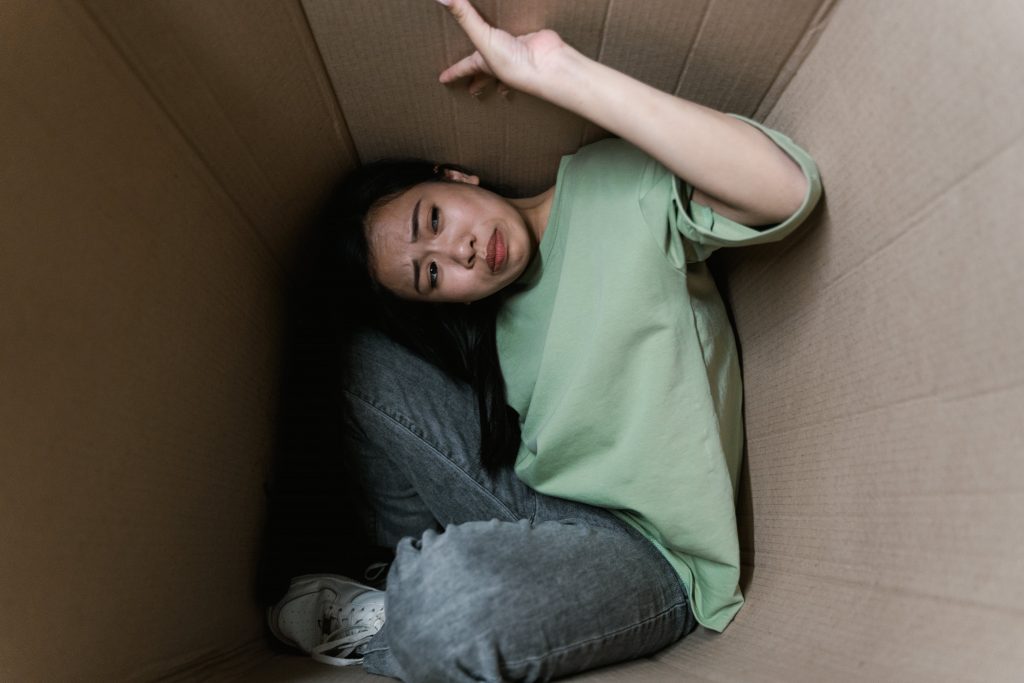LEARN SOMETHING NEW
Therapy Blog for Orem, Spanish Fork & South Jordan
Just Breathe! Reduce Anxiety With This Simple Exercise
Just Breathe! Reduce Anxiety With This Simple Exercise
Anxiety might seize you in the middle of the night, or perhaps at the beginning of a work meeting, or maybe while driving your kids to soccer practice.
Wherever it happens, it can overwhelm you. Your mind won’t stop running; body is tense; heart is racing. You can’t breathe! And, of course you can’t relax and enjoy yourself.
of course you can’t relax and enjoy yourself.
If you have ever felt a combination of these sensations, you have probably felt anxiety. This is a common experience among adults and adolescents. Whether you accept it or not, anxiety is part of a normal, healthy life.
Diagnosable anxiety disorders, however, are different than normal, everyday anxieties. A hallmark characteristic of an anxiety disorder is excessive fear or worry about a real or perceived threat (DSM-V).
Did you know that according to the Substance Abuse and Mental Health Services Administration (SAMHSA), nearly 40 million people in the United States suffer from this disorder in a given year. That’s 18 percent of the population.
Specific Anxiety Disorders
There are many specific anxiety disorders. Learning how to deal with these uncomfortable emotions is crucial (Related Article: Emotions 101: How To Be Healthy and 3 Principles of Emotional Health). Some of these include generalized anxiety disorder, selective mutism (failure to speak in social situations even when able to speak in other situations), specific phobias (fear of animals, objects, etc.), social anxiety disorder (Related Article: Social Anxiety, What To Do), panic disorder, or agoraphobia (fear of having a panic attack or other embarrassing symptoms in locations such as public transportation, standing in a line, etc.).
Some anxiety disorders, such as phobias and generalized anxiety disorder, usually begin in childhood around 11 years old. These can continue into adulthood if left untreated. These two disorders are the most common anxiety disorders in adulthood according to SAMHSA.
Because of their belief that things will not change, or that they just need to get over it, many suffering with an anxiety disorder do not seek treatment. The good news is that anxiety is treatable.
Your biology has a lot to do with it; therefore, a first step in reducing anxiety includes dealing with the body’s physical response to stress. This is crucial. Let’s talk a look at what to do to reduce anxiety.
Diaphragmatic Breathing
Your body’s internal organ regulator, your autonomic nervous system (ANS), has two applicable parts of the solution.
First is the sympathetic nervous system (SNS), which is in charge of your fight-or-flight responses. This part, for example, pumps up your body so you can outrun that dog jumping out from behind the bushes.
Second is the parasympathetic nervous system (PNS), which aids in calming your body. This part helps your body deescalate after you have escaped that dog.
When you feel anxious, your SNS is engaged. So, you need to disengage it. To help calm your body in these moments, therefore, the key is to activate your PNS. The exercise outlined below (partially adopted from The Anxious Brain: The Neurobiological Basis of Anxiety Disorders and How to Effectively Treat Them) triggers this part of your ANS.
Here’s how to do it.
Breathing Technique Steps
1. Lie down, stand, or sit in a comfortable position.
“Ground’ yourself by creating an open posture with both feet on the floor and your back against a chair or bed. If you are crying, in the fetal position, or hunched over, this technique is difficult to do.
2. Breathe in deeply.
Picture a water balloon being filled with water as you first fill up your abdomen with air and then your chest. Make sure to feel the warmth and the weight of the air as you breathe in.
3. Breathe out with an elongated breath—longer than it took you to breathe in.
Purse your lips as you breathe out. By doing so, you can slow your breathing. This is important because breathing out slowly will help activate the PNS. Therefore, calming your body. This is the whole purpose of the breathing technique. This is what makes it work.
4. As you breathe in and out, focus on the physical sensations you experience.
Focus on your feet touching the ground, and your abdomen and lungs expanding and contracting. Also notice the feel of air rushing over your tongue and through your pursed lips. Next, notice how your head, arms and hands feel. By doing this you will better be able to be present and in-the-moment.
5. Practice!
Develop this skill through practice. You could use it while you are at work, stopped at a traffic light, or at home. Make sure you do each cycle (breathing in and breathing out) ten times or more, as you learn to engage your PNS.
6. If you feel dizzy, light headed or out of breath, do not continue this technique.
If your breathing is restricted or obstructed there may be other issues to consider. So, you could speak with a therapist or doctor about the appropriateness of this exercise for you. Even though this technique is a good start to help reduce anxiety in the moment, it is most successful when done in conjunction with therapy.
Conclusion
Anxiety disorders affect millions. Often, those who suffer with it often feel there is no solution. It impacts them and their relationships (Related Article: Anxiety Help: Couples Therapy and Anxiety Help – Connect With Others). However, basic biology tells us differently. Activating our PNS through breathing techniques really does work—give it a try next time you feel anxiety creeping in. You will be surprised at how effective these simple breathing techniques can be. They are a great companion to counseling when dealing with this problem (Related Article: Counseling For Anxiety).
Treatment for anxiety can help you cope well and be healthy (Related Article: Anxiety: How Therapy Can Help).
Anxiety Counseling – Get Help
We have therapists who treat anxiety at our counseling centers located in South Jordan, Orem and Spanish Fork. We can help you apply these techniques.
